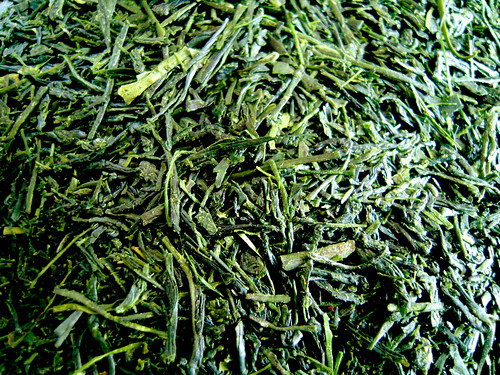
Every time I would go to someone's house in Tokyo, they would likely offer me sencha before I even settled onto my zabuton or chair. Sencha is made by steaming green tea leaves, shaped into thin rolls, dried and then pan-fried or fired to lock-in the flavor. Pretty common in the U.S. as well, most people encounter sencha in Japanese restaurants (it is light green in tint) or at their local Trader Joe's in tea bags (which might even be bancha, see below). As a side note, I will mention the different types of teas made from green tea leaves in Japan (although this post is about sencha).
Types of Green Tea
Gyokuro Made from leaves that are grown in the shade (highest quality stuff), steamed and dried. Gyokuro tastes smooth and mellow.
Sencha Made from leaves that not hidden from the sun (ranges in quality), steamed and dried. Sencha tastes grassy and bright.
Macha Made from grinding steamed, dried leaves into a fine powder. Macha tastes bitter but nutty and almost kind of sweet.
Houjicha Made from leaves roasted in a porcelain container. Houjicha tastes earthy and clear and has a red-tint to it.
Bancha The name translates as "Common tea" and is made from leftover green tea leaves (from higher quality varieties), stems and twigs. Bancha tea leaves are harvested at the end of the season. Bancha is even more earthy tasting than houjicha - almost hearty but not as clear as the other types.
Before I left Japan, the owner of
Washio, a tiny bar/izakaya that specializes in seafood and seats six people, gave me two packs of "shin-cha" sencha. Shin-cha literally translates as "new tea," but explained more accurately by describing it as the first pick of the harvest. Shin-cha means that the leaves pack the punch as far as nutrients, brightness and depth of flavor.
And here are the two packages of shin-cha sencha that he sent my husband and I to America with.
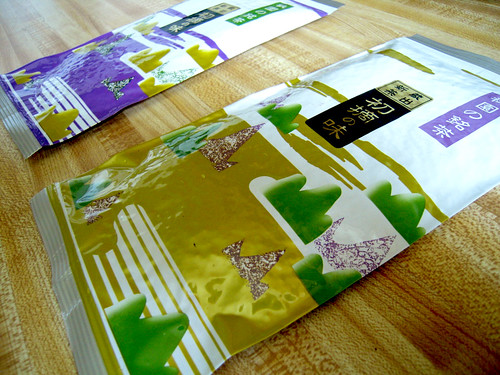
These leaves were grown and harvested in the most coveted region for green tea, the southern Japanese island of
Shikoku. This tea leaf company is called
Hirakien.
How to prepare and drink sencha
Open the package and store in an air-tight container. Store in a cool, dark place.
Boil water until your tea kettle is rocking back and forth or whistling furiously (approximately 100°C). Turn off the heat.
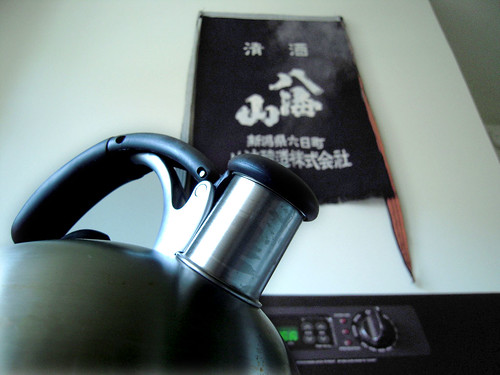
Have your teapot (kyusu) ready on the side and scoop a heaping teaspoon of sencha and put into your teapot.
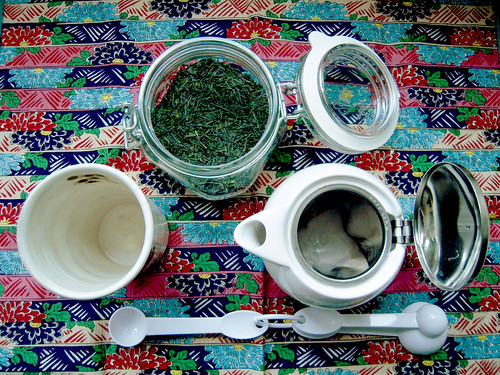

Wait until your water cools down a little bit to about 80°C.
Pour the water into your teapot. Wait for 60-90 seconds.
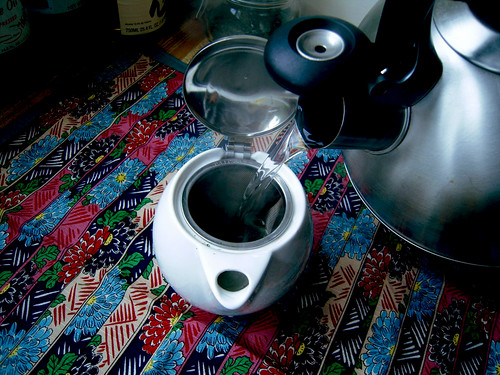
Pour all the content of the teapot into tea cups. You want to avoid water soaking the leaves for extended amounts of time.
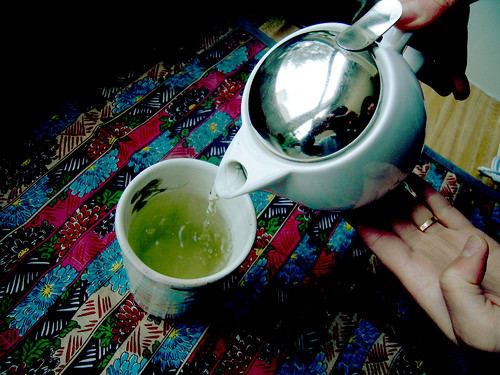
You can pour hot water again into the teapot another 2-3 times and still extract flavorful tea.
When drinking from a teacup, there is a particular way to hold the cup to avoid burning yourself. Grab the cup with one hand with your thumb and fore or middle finger at the top third of the cup - the lower you try to grab it, the hotter it is. Support the underside of the cup with your other hand.
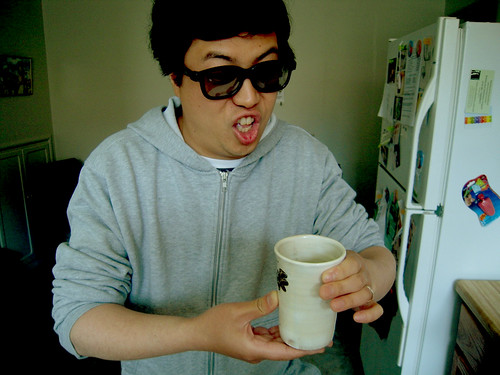 Achiiii! (hotttt!)
Achiiii! (hotttt!)
My Japanese husband tells me that if your fingers do get uncomfortably hot, you can diffuse the heat in your fingers by pinching your earlobes.
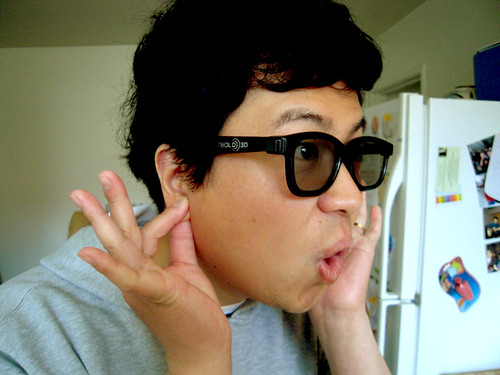
 Every time I would go to someone's house in Tokyo, they would likely offer me sencha before I even settled onto my zabuton or chair. Sencha is made by steaming green tea leaves, shaped into thin rolls, dried and then pan-fried or fired to lock-in the flavor. Pretty common in the U.S. as well, most people encounter sencha in Japanese restaurants (it is light green in tint) or at their local Trader Joe's in tea bags (which might even be bancha, see below). As a side note, I will mention the different types of teas made from green tea leaves in Japan (although this post is about sencha).
Types of Green Tea
Gyokuro Made from leaves that are grown in the shade (highest quality stuff), steamed and dried. Gyokuro tastes smooth and mellow.
Sencha Made from leaves that not hidden from the sun (ranges in quality), steamed and dried. Sencha tastes grassy and bright.
Macha Made from grinding steamed, dried leaves into a fine powder. Macha tastes bitter but nutty and almost kind of sweet.
Houjicha Made from leaves roasted in a porcelain container. Houjicha tastes earthy and clear and has a red-tint to it.
Bancha The name translates as "Common tea" and is made from leftover green tea leaves (from higher quality varieties), stems and twigs. Bancha tea leaves are harvested at the end of the season. Bancha is even more earthy tasting than houjicha - almost hearty but not as clear as the other types.
Before I left Japan, the owner of Washio, a tiny bar/izakaya that specializes in seafood and seats six people, gave me two packs of "shin-cha" sencha. Shin-cha literally translates as "new tea," but explained more accurately by describing it as the first pick of the harvest. Shin-cha means that the leaves pack the punch as far as nutrients, brightness and depth of flavor.
And here are the two packages of shin-cha sencha that he sent my husband and I to America with.
Every time I would go to someone's house in Tokyo, they would likely offer me sencha before I even settled onto my zabuton or chair. Sencha is made by steaming green tea leaves, shaped into thin rolls, dried and then pan-fried or fired to lock-in the flavor. Pretty common in the U.S. as well, most people encounter sencha in Japanese restaurants (it is light green in tint) or at their local Trader Joe's in tea bags (which might even be bancha, see below). As a side note, I will mention the different types of teas made from green tea leaves in Japan (although this post is about sencha).
Types of Green Tea
Gyokuro Made from leaves that are grown in the shade (highest quality stuff), steamed and dried. Gyokuro tastes smooth and mellow.
Sencha Made from leaves that not hidden from the sun (ranges in quality), steamed and dried. Sencha tastes grassy and bright.
Macha Made from grinding steamed, dried leaves into a fine powder. Macha tastes bitter but nutty and almost kind of sweet.
Houjicha Made from leaves roasted in a porcelain container. Houjicha tastes earthy and clear and has a red-tint to it.
Bancha The name translates as "Common tea" and is made from leftover green tea leaves (from higher quality varieties), stems and twigs. Bancha tea leaves are harvested at the end of the season. Bancha is even more earthy tasting than houjicha - almost hearty but not as clear as the other types.
Before I left Japan, the owner of Washio, a tiny bar/izakaya that specializes in seafood and seats six people, gave me two packs of "shin-cha" sencha. Shin-cha literally translates as "new tea," but explained more accurately by describing it as the first pick of the harvest. Shin-cha means that the leaves pack the punch as far as nutrients, brightness and depth of flavor.
And here are the two packages of shin-cha sencha that he sent my husband and I to America with.
 These leaves were grown and harvested in the most coveted region for green tea, the southern Japanese island of Shikoku. This tea leaf company is called Hirakien.
How to prepare and drink sencha
Open the package and store in an air-tight container. Store in a cool, dark place.
Boil water until your tea kettle is rocking back and forth or whistling furiously (approximately 100°C). Turn off the heat.
These leaves were grown and harvested in the most coveted region for green tea, the southern Japanese island of Shikoku. This tea leaf company is called Hirakien.
How to prepare and drink sencha
Open the package and store in an air-tight container. Store in a cool, dark place.
Boil water until your tea kettle is rocking back and forth or whistling furiously (approximately 100°C). Turn off the heat.
 Have your teapot (kyusu) ready on the side and scoop a heaping teaspoon of sencha and put into your teapot.
Have your teapot (kyusu) ready on the side and scoop a heaping teaspoon of sencha and put into your teapot.

 Wait until your water cools down a little bit to about 80°C.
Pour the water into your teapot. Wait for 60-90 seconds.
Wait until your water cools down a little bit to about 80°C.
Pour the water into your teapot. Wait for 60-90 seconds.
 Pour all the content of the teapot into tea cups. You want to avoid water soaking the leaves for extended amounts of time.
Pour all the content of the teapot into tea cups. You want to avoid water soaking the leaves for extended amounts of time.
 You can pour hot water again into the teapot another 2-3 times and still extract flavorful tea.
When drinking from a teacup, there is a particular way to hold the cup to avoid burning yourself. Grab the cup with one hand with your thumb and fore or middle finger at the top third of the cup - the lower you try to grab it, the hotter it is. Support the underside of the cup with your other hand.
You can pour hot water again into the teapot another 2-3 times and still extract flavorful tea.
When drinking from a teacup, there is a particular way to hold the cup to avoid burning yourself. Grab the cup with one hand with your thumb and fore or middle finger at the top third of the cup - the lower you try to grab it, the hotter it is. Support the underside of the cup with your other hand.
 Achiiii! (hotttt!)
My Japanese husband tells me that if your fingers do get uncomfortably hot, you can diffuse the heat in your fingers by pinching your earlobes.
Achiiii! (hotttt!)
My Japanese husband tells me that if your fingers do get uncomfortably hot, you can diffuse the heat in your fingers by pinching your earlobes.


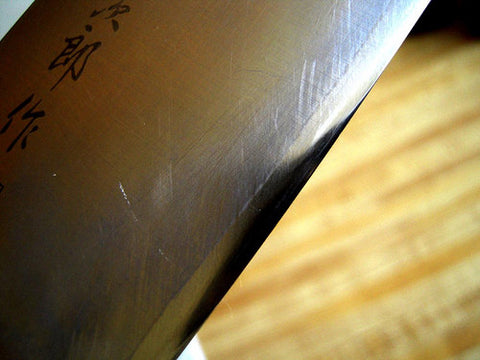

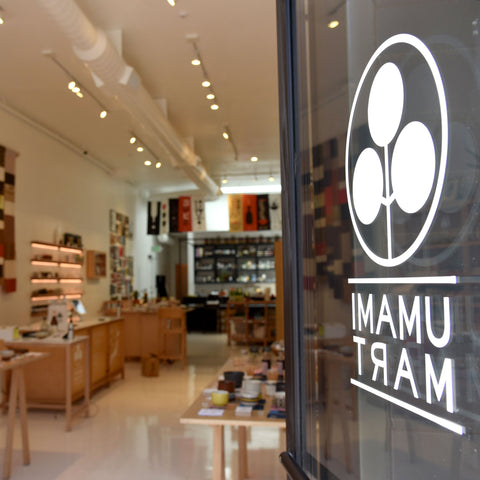
Comments (27)
Two fave ways but always, everyday.
1. Out of a pint glass, in the car on the way to work. This is usually a sloppily-made strong, bright green tonic made by me personally.
2. Delivered to in bed by Russ who takes more care and picks a cute (handle-free) cup for me.
Green tea is my BLISS! Whether matcha, genmaicha, or whole leaf I enjoy a cup every night to wind down and reflect on the day. It’s part of my daily ‘me’ time.
i love when sencha is prepared for me. i can’t do it well. i had a wonderful sencha the other day out at a cafe. it was prepared, however, with water that was too hot. i like to enjoy it slowly and allow the mellow grassy flavour to blend in with my mood and bring me an increased sense of peace.
I love black tea, earl grey preferably! I like to add some milk to my tea, which also helps cool it down because I am impatient
I love Umami Mart! Thanks for this giveaway
Constantly getting offered a cup of sencha reminded me of the Moroccan culture of serving mint tea (although it’s made of Chinese gunpowder tea).
I love enjoying iced jasmine tea as an afternoon pick me up and especially with boba! I love a cup of warm tea on a cold, rainy day though.
last year during a layover in Tokyo so i could eat ramen, and other…
one thing that i was able to enjoy was a 7 Courses J Tea Experience
One of the courses was steeped gyokuro. That by itself was very nice, but afterwards, the tea master took some of the tea leaves and drizzled ponzu over the gyokuro to eat. this way was quite lovely, vibrant and rather interesting.
so Pro-Tip: if you’re planning a trip to tokyo, and have a spare hour or two; and want to try something different… Souen 櫻井焙茶研究所
they also serve traditional J sweets from Higashiya with several courses.
Hi Yoko. thanks for your post – i am wondering… what category of teas that you listed above does genmaicha fall under? That is my favorite.
I live near a beach, and my morning ritual is to get up a few minutes before the sun comes up, open my windows, sit in bed with my tea and listen to the waves.